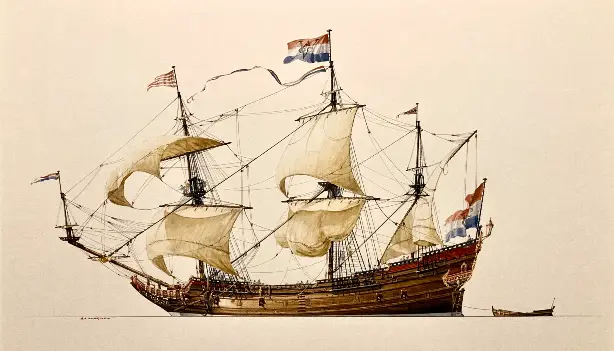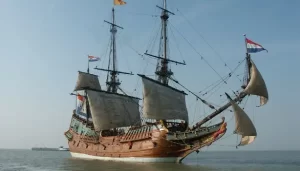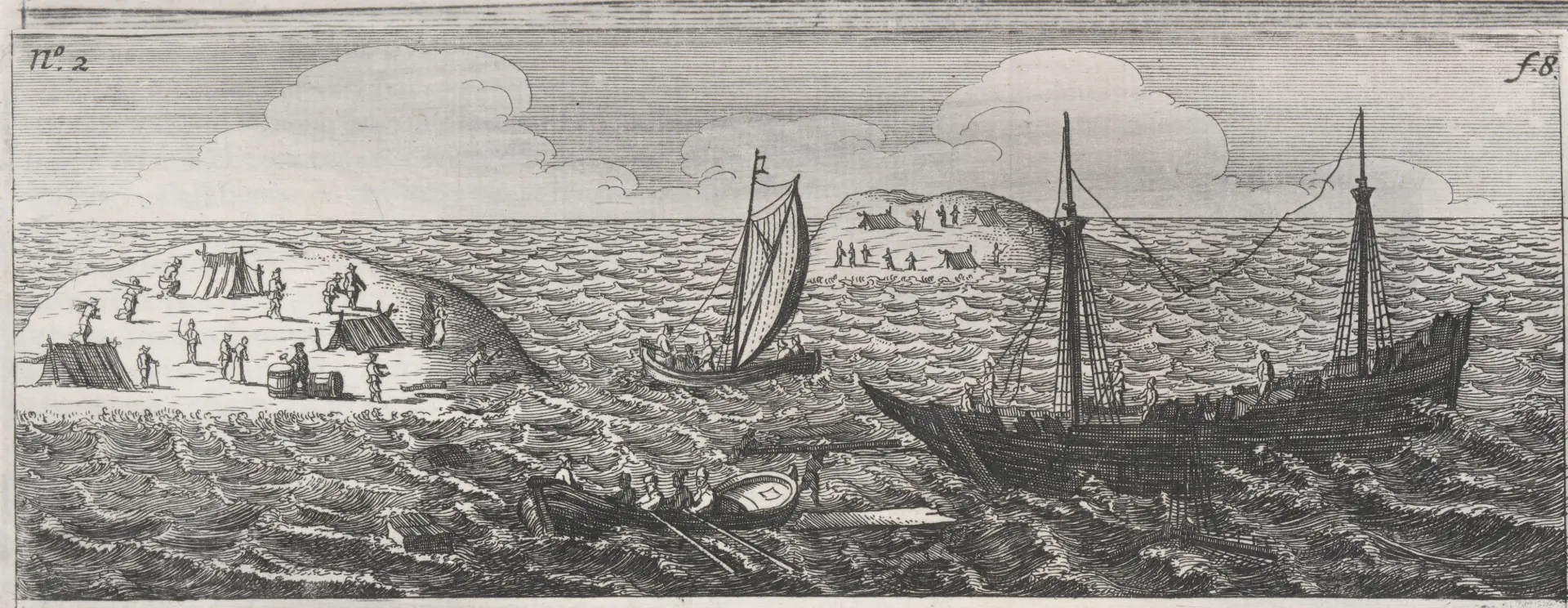Batavia Maiden Voyage (1628)
In 1628, the Dutch ship Batavia set sail on her maiden voyage. The Batavia, a vessel of the Dutch East India Company, embarked from Texel, headed for the East Indies. Commanded by Francisco Pelsaert, she carried a large number of passengers and a rich cargo of silver, gold, and jewels.
Mutiny and Wreck in the Indian Ocean

The journey quickly turned ominous. Ariaen Jacobsz, the ship’s skipper, and Jeronimus Cornelisz, a junior merchant, plotted a mutiny. They sought to seize the Batavia and her precious cargo. Their orchestrated plan took shape amidst the vast, uncharted waters of the Indian Ocean.
When the commander, Pelsaert, fell ill, Jacobsz and Cornelisz took control of the ship. As tensions simmered on board, Jacobsz seized the moment to navigate towards dangerous waters, steering the Batavia off course. The crew and 341 passengers remained unaware of the impending disaster.
On June 4, 1629, The Dutch Ship the Batavia struck Morning Reef near the Houtman Abrolhos islands off Western Australia. Panic spread as the ship began to break apart, 40 passengers drowned in the carnage. Pelsaert, Jacobsz, and Cornelisz led the survivors to nearby Beacon Island, salvaging what they could from the wreck.
Stranded on the desolate island, the mutineers saw their opportunity. Cornelisz, now the leader, enacted his brutal plan to pillage the gold and jewels. He seized control, isolating those loyal to Commander Pelsaert. Cornelisz gained followers by offering rewards to those who joined his gang. He executed around 100 men, women, and children who defied him. However, Commander Pelsaert and a handful of his loyal sailors survived the slaughter and took shelter on a nearby small island.
The Fight for Survival on the Dutch Ship the Batavia

Cornelisz ruled through fear and violence and aimed to build a new colony under his command. His tyranny knew no bounds. He forced survivors to serve him, using the remaining resources to strengthen his grip.
Meanwhile, Commander Pelsaert departed in the ship’s longboat with a group of 48 loyal sailors and passengers, including an infant. They embarked on a monstrous journey, traveling 3,500 km to modern-day Jakarta, home of the Dutch ship Batavia, seeking aid. After an arduous voyage, everyone in the longboat survived, including Commander Pelsaert. They alerted authorities, who acted swiftly. Pelsaert took command of the newly built yacht Saerdam. He set out with 26 armed sailors, heading to the wreck on a mission to secure the valuable cargo, rescue any survivors, and deal with Cornelisz.
Back on Beacon Island, Cornelisz’s reign of terror continued for over 4 month. However, a faction of survivors, led by soldier Wiebbe Hayes, resisted. They established a defensive position on another island. Hayes and his men repelled multiple attacks from Cornelisz’s forces of 20- 30 men.
“Fortunately, Pelsaert returned to the wreck of the Dutch ship Batavia with a rescue yacht in September 1629. A fierce battle ensued. Hayes and his men helped overpower the mutineers. Pelsaert swiftly executed Cornelisz and his key followers, ending their bloody rule.”

Leave a Reply